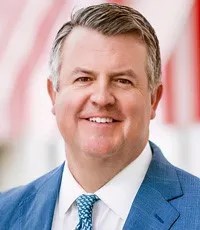By Brewster Bevis, Associated Industries of Florida
Florida’s paradise comes with a price tag, and lately, it feels like that price has been persistently high. But the high cost of insurance isn’t a malicious plot of insurance companies, it’s a symptom of two fundamental issues: Florida’s vulnerability to hurricanes and our collective tendency to build in high-risk areas.
Citizens Property Insurance Corp., initially intended as a last resort for those who couldn’t find coverage elsewhere, has ballooned to more than a million policies. A $50 billion hurricane could impose crippling assessments on policyholders and taxpayers. Fortunately, policymakers and Citizens leadership have been focused on right-sizing Citizens, and we hope to continue to see depopulation which will decrease the potential tax on Floridians.
But what are the real cures?
Florida has one of the strictest building codes in the country, but we can always do more. Impact-resistant windows, hurricane shutters, reinforced roofs and elevating properties in flood zones are self-evident ways to mitigate risk.
Leaders have rightfully invested in the My Safe Florida Home program to help Floridians make those updates, and the Office of Insurance Regulation has embarked on a project to further incentivize resiliency by looking to update its wind mitigation inspection forms. This will give homeowners the tools to understand their risk, make improvements and see the benefit of those improvements in the form of insurance discounts.

Responsible development is also key. Building high-rises on the beach might look glamorous, but it’s like parking your car in the middle of a busy intersection. Smarter land-use planning that discourages development in high-risk zones is essential for long-term safety and affordability.
Fortunately, Florida made a herculean effort to cure one of its most pervasive problems — litigation abuse. While the trial bar threw every wrench it could to stymie needed property insurance reforms, the reforms are working, and the results have already lowered the rate need for existing companies, incentivized new company formation, expanded reinsurance capacity, and increased private carrier interest in writing new policies. The governor and legislature should be applauded for correctly diagnosing the disease and taking the medicine, despite the political threats from plaintiff attorneys.
While the realities of living on a peninsula are inescapable, Florida should continue to lean into long-term solutions that ensure access to affordable and reliable insurance. Enhancing resiliency and encouraging smart development will continue to chase away the storm clouds of insurance woes. We can do this.
Brewster Bevis is president and chief executive officer of the Associated Industries of Florida. This opinion piece was originally published by the Tallahassee Democrat, which is a media partner of The Invading Sea. Banner photo: Some of the destruction to homes caused by Hurricane Ian in Florida (iStock image).
If you are interested in submitting an opinion piece to The Invading Sea, email Editor Nathan Crabbe at ncrabbe@fau.edu. Sign up for The Invading Sea newsletter by visiting here.



